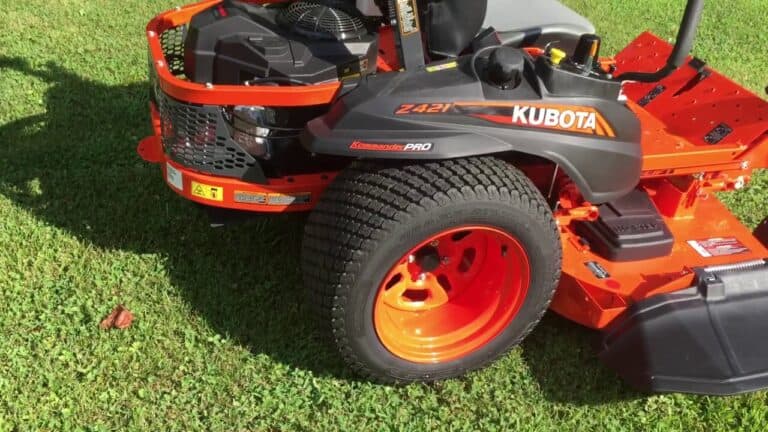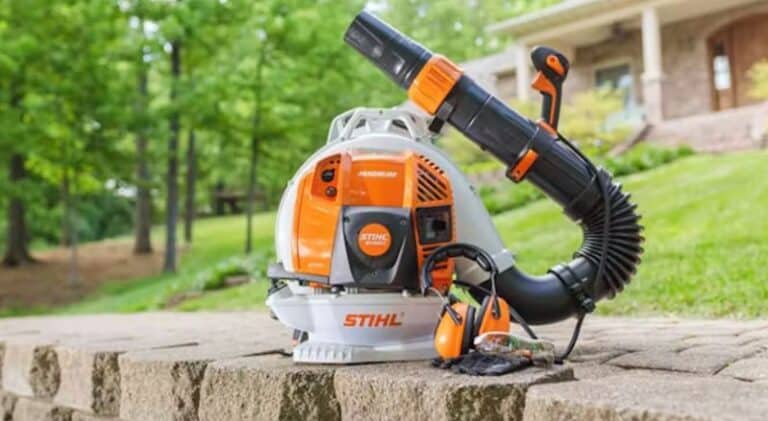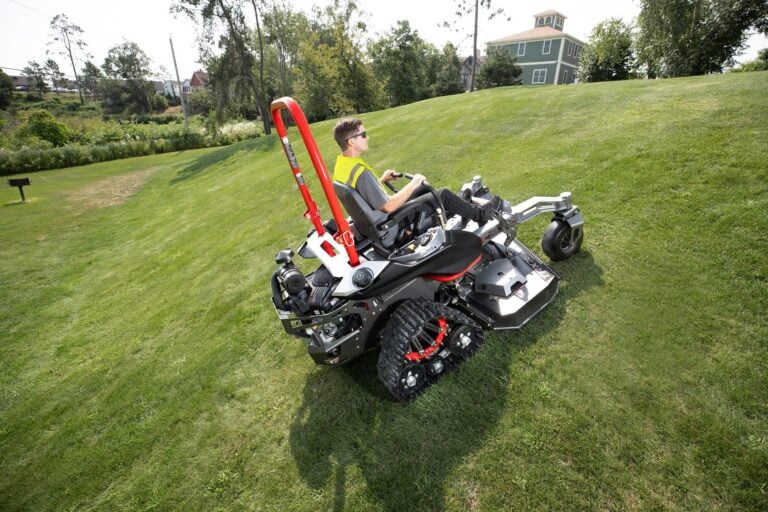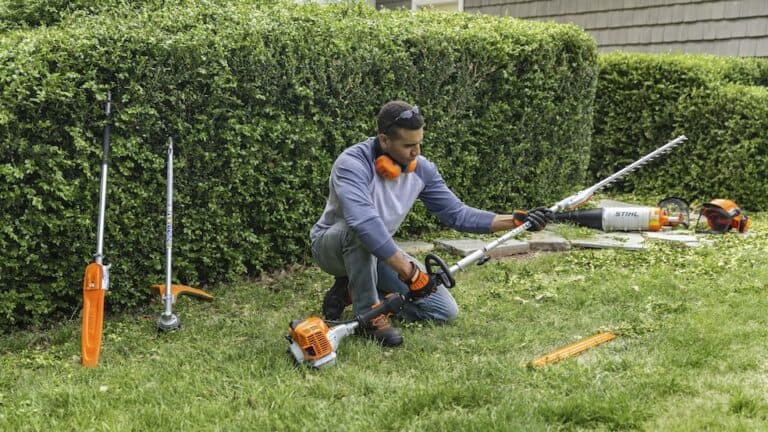The Right Way to Push a Zero Turn Mower

Zero turn lawn mowers are fast and easy to maneuver, which makes them a great way to mow lawns. With the right mower, you’ll be able to save time and enjoy features like power steering. Of course, if your mower stops working, you may need to push it manually.
Is there a way to push a zero turn mower?
It’s possible to push a zero turn mower, but you’ll have to disable some safety features before you can move it manually. In order to push the mower, you’ll need to shut down the hydrostatic drive. You’ll also need to disengage the mower’s brakes.
This process could easily damage your mower if you’re not careful, which is why you’ll want to make sure you do this the right way. Here’s what you should do if you need to manually move your mower.
Can You Push a Zero Turn Mower?
While a zero turn mower might look similar to a tractor at a glance, they operate in different ways. Tractors have a mowing deck underneath the machine, but on a zero turn mower, this deck is in front. Zero turn mowers also have a turn radius of zero inches.
“An advantage of the zero turn mower is its maneuverability,” says Pete Farm, a landscaping equipment specialist. “It’s truly a zero turn machine. It can turn right around within its own radius.”
Normally, zero turn mowers rely on a hydrostatic system that manually moves each wheel. As long as this system is in place, the wheels will lock up when you try to push your mower by hand. However, you can disable this system and manually move your mower.
Knowing how to push your mower can be helpful in emergency situations. There are times when you may not be able to operate your mower normally, like if you have a dead battery or run out of gasoline. Since zero turn mowers are meant to be pushed forward, towing the mower can cause significant damage.
Manually pushing your mower is the simplest and safest way to move it when it stops working. There are even times when you may find it easier to move your mower by hand.
How Do You Push a Zero Turn Mower Manually?
To push your mower, you’ll need to turn off the hydrostatic system and free your drive wheels. While this process can vary from model to model, releasing your wheels is generally a fairly simple process.
There should be a hydrostatic motor attached to both of your mower’s rear wheels. When you look at the wheels more closely, you’ll see a lever that you can twist, push, or pull. Moving that lever will disable the motor, allowing your wheels to spin freely.
It should only take a minute or two to unlock your wheels, but there are a few precautions you’ll want to take before you get started. If your mower is on a slope, it will start to move forward as soon as the wheels are released. To prevent damage, you should apply your parking brake or use a tire wedge stopper to keep the mower in place.
You should also make sure your mower’s brake system is disabled. If you push the mower forward when the brakes are engaged, it could wind up damaging the hydraulic system and the brakes.
Most zero turn mowers have an electronic braking system that relies on power from the mower’s engine. “Once you turn the power off, the electronic brakes aren’t allowed to release,” says Andy Wilson of G4 Outdoors. “You need to have power running in order to release your brakes.”
However, older models or some smaller mowers may have a manual braking system. There are also mowers with automatic locking brakes that automatically engage when you leave your seat. You’ll need to identify the braking system your mower uses so that you can properly disable the brakes.
How to Disable Electronic Brakes
You can only disengage electronic brakes when your mower’s engine is running. Some zero turn mowers have brake pedals or buttons, but others may be controlled by a lap bar. On these mowers, the brakes will be engaged when the steering levers are pushed outwards and are disengaged when the levels are pulled inward.
Once your brakes are disabled, you should turn off your engine before you disengage the hydraulic system on your rear wheels. It’s likely that the exhaust pipe of your mower is still hot, so for your own safety, you should give it a chance to cool before you release the wheels.
How to Disengage Manual Brakes
Cut power to your mower’s engine before you release your brakes. Most zero turn mowers with manual braking systems have brake levers that you can control from the seat. You may be able to push your mower once the brakes have been disengaged, but if your mower won’t budge, you’ll need to release its rear wheels.
How to Disengage Automatic Brakes
To keep your brakes from turning on, you should make sure that the brakes aren’t engaged when you shut your mower down. You may need to check your manual to see exactly what causes your brakes to lock up. When your brakes are disabled and your mower is off, you can free the rear wheels and move your mower.
How Can You Stay Safe When You Push a Zero Turn Mower?
To protect yourself and avoid damaging your mower, you’ll want to clear out a path for your mower before you do any pushing. Once the wheels are free and the brakes are turned off, your mower will move forward automatically. For safety’s sake, you may want to ask someone to help you move your mower, especially if the mower is on a slope.
Since zero turn mowers can be heavy, it’s also a good idea to clear out your mower’s cargo bed. That way, the mower will be easier to control.
When you’re done pushing your mower, make sure you re-engage the hydrostatic system and lock up your wheels. Take a minute to confirm the rear wheels are locked before walking away from the mower.
Wrapping Up
Zero turn mowers aren’t designed to be pushed, but you can manually move your mower as long as you unlock the rear wheels and disengage the brakes. Knowing how to push a zero turn mower can really come in handy, especially if there’s a problem with the mower’s battery or engine. If you follow the right steps and take a few precautions, you should be able to move your mower without any problems.
You can also read:






